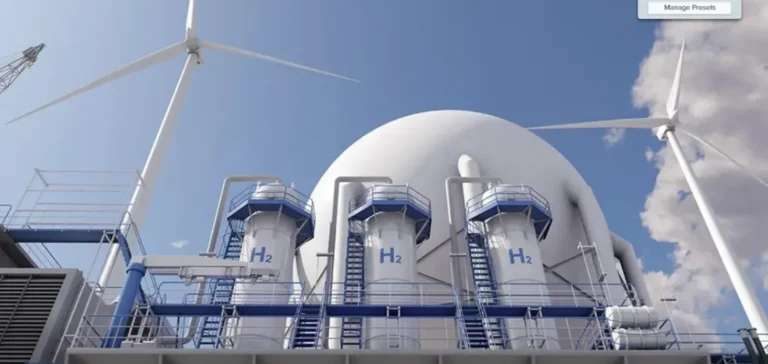The official launch of the Hybrid Hydro Floating Solar (HHFS) project and the Green Hydrogen Hub marks a turning point in Malaysia’s ambition to strengthen its position within the regional green hydrogen value chain. The initiative, led by Petroliam Nasional Berhad (PETRONAS), Tenaga Nasional Berhad (TNB) and Terengganu Inc, supports the country’s National Energy Transition Roadmap (NETR) and Hydrogen Economy and Technology Roadmap (HETR). The aim is to boost green hydrogen production while consolidating the energy infrastructure needed for Malaysia’s energy transition.
Strategic partnerships for energy innovation
The creation of the Green Hydrogen Hub stems from a strategic partnership between PETRONAS and TNB, two leading Malaysian public sector companies. TNB is enhancing the national power grid to meet the demands of renewable energy, while PETRONAS is focusing on hydrogen production and its derivatives, including green methanol and green ammonia. The launch ceremony brought together several high-level officials, including Prime Minister Dato’ Seri Anwar Ibrahim and the leaders of the three partner organisations.
The Hybrid Hydro Floating Solar component, a partnership between TNB’s subsidiary TNB Genco Sdn Bhd and Terengganu Inc, fits into a regional economic growth strategy. This facility is part of a broader 2.5 GW initiative aimed at optimising the capacity of existing hydroelectric plants while expanding floating solar power generation on reservoirs.
Towards an integrated hydrogen value chain
The Green Hydrogen Hub in Terengganu stands out for its integrated model, connecting continuous renewable production from the Kenyir HHFS site to hydrogen and derivative manufacturing. This project, located in the Kenyir-Kertih corridor, leverages both TNB’s and PETRONAS’ infrastructure, including a hydrogen electrolyser, derivatives plant, and carbon capture, utilisation and storage (CCUS) facilities.
The initiative aims to support the development of the ASEAN Power Grid, thereby promoting cross-border trade in renewable electricity and regional energy market integration. According to Dato’ Burhanuddin Hilmi Mohamed @ Harun, President and CEO of Terengganu Inc, “these projects show that Terengganu has the potential to become a major green energy player and open new economic opportunities for the region”.
Regional impact and international cooperation
Datuk Megat Jalaluddin Megat Hassan, President and CEO of TNB, stated that “the cooperation around the Terengganu Green Hydrogen Hub serves as a cornerstone of TNB’s commitment to energy innovation”. Tan Sri Tengku Muhammad Taufik, President and Group CEO of PETRONAS, highlighted the objective of “laying the foundation for a robust energy ecosystem capable of ensuring national and regional energy security”.
These projects illustrate the willingness of Malaysia’s leading state-owned groups to structure a complete value chain, from renewables to green hydrogen exports, while fostering local skills transfer and regional cooperation with partners from the Association of Southeast Asian Nations (ASEAN). Network integration and technological innovation are viewed by sector players as levers for securing Malaysia’s position on the international energy market map.






















